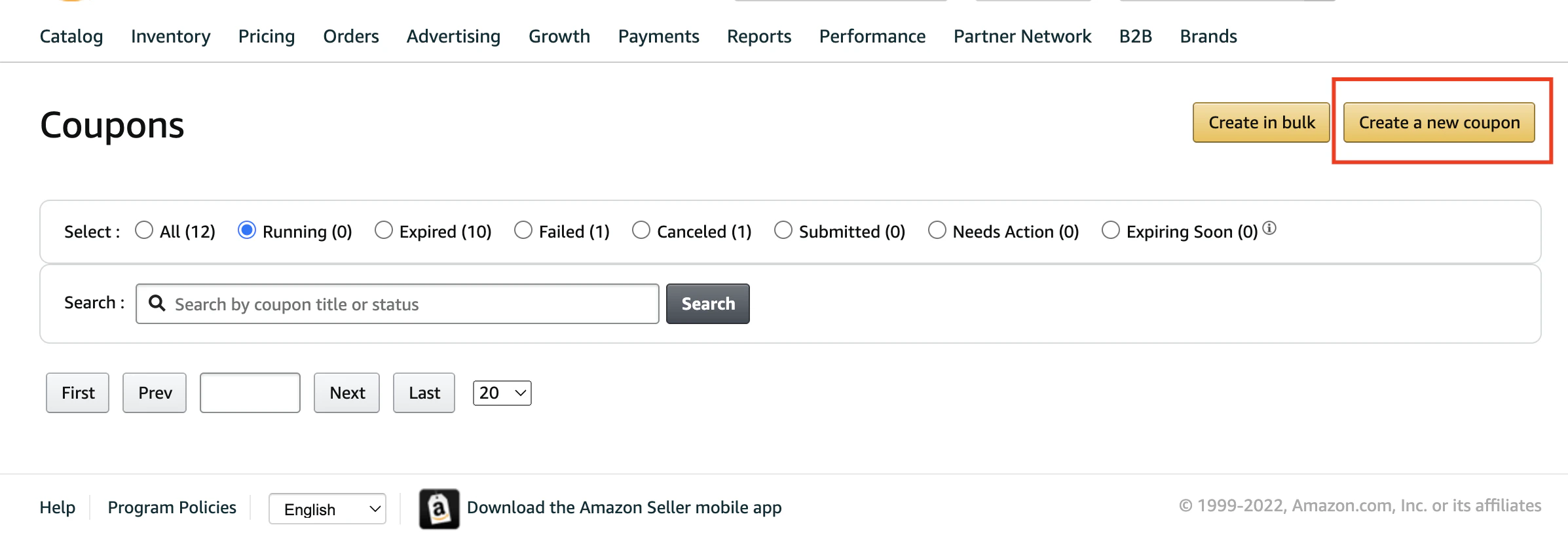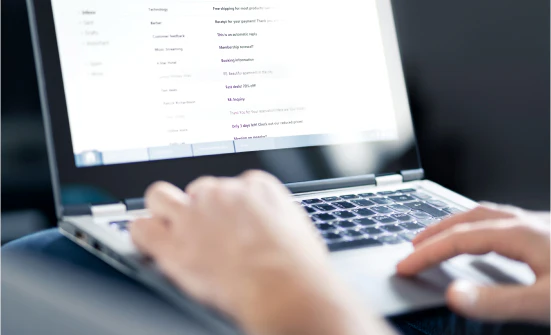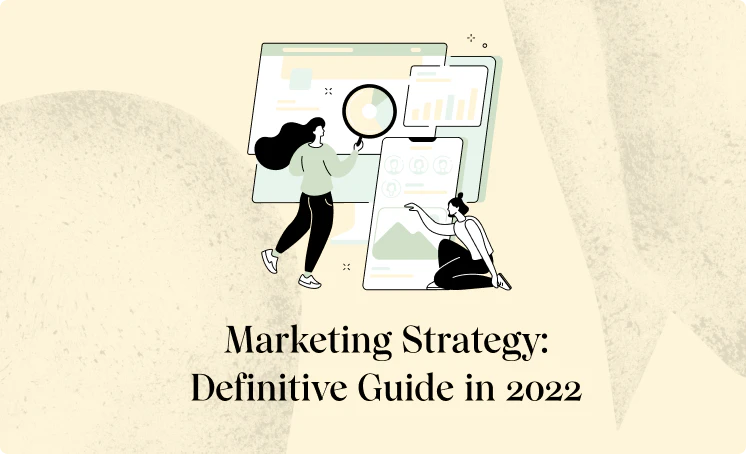Introduction
You’ve seen the coupon tag on a product listing on Amazon advertising a dollar amount or percentage off.
Maybe you’ve been wondering, “how do Amazon coupons work?” because you’ve heard they can help drive traffic to your listing.
Coupons are a powerful incentive for consumers.
Amazon knows that and tries to make setting them up for your products easy, but there’s more to planning for a coupon than what goes on in the backend of Amazon.
Amazon offers deals in various forms, some of which are automatic, but coupons give the power to the customer. They have to actually “clip” the coupon for it to be applied. Shoppers will see a green 'Clip Coupon' button on product listings, which they can click to instantly apply the discount at checkout.
This guide sets out to teach you what you need to know about Amazon coupons and strategies to make your coupons more successful.
What Are Coupons On Amazon?
A coupon on Amazon is similar to a coupon anywhere else, aside from the fact that the coupons are fully digital and won’t be coming in the mail.
Just like department or grocery stores, Amazon uses coupons to provide discounts to increase sales. Amazon knows that you can entice customers to buy more when they are getting a better deal and to look at products that aren’t an urgent want or need. Coupons allow shoppers to avoid paying full price for eligible items, making them more attractive.
Amazon offers deals in various forms, some of which are automatic, but coupons give the power to the customer. They have to actually “clip” the coupon for it to be applied.
The biggest difference for Amazon coupons compared to coupons at other places though, is that Amazon is made up mostly of third-party sellers, making you responsible for setting up and utilizing the coupons.
The marketplace does dictate some of the parameters around who is eligible to use coupons and the discount range, but most of what goes into the coupon is up to you as the seller. Only eligible items—those meeting Amazon's criteria—can have coupons applied.
Amazon provides the tools, but you have to understand how they work, and how to optimize the coupons for your products.
Amazon Coupons: How Do They Work?
For shoppers, Amazon coupons are fairly simple to use.
They find a product with a coupon they want to redeem either from a search or browsing the deals page. Coupons are often visible directly in Amazon's search results as a green badge, making it easy for shoppers to spot deals. Shoppers tick the box to activate the coupon once the product is in the cart, then go ahead and add the item to the cart, and they’re ready to go! The discount will apply when they check out, and the shopper will see the discounted price reflected in their order summary.
The only semi-friction causing piece is if a customer accidentally forgets to tick the box before adding the item to the cart resulting in the discount not being added.
For the vendor or seller, it is slightly more complicated, but we’re going to walk you through it.
Before you go into Seller Central to set up your coupon, there are some things you need to understand about why and how to use Amazon coupons.
Like any strategy worth trying, you need to do the proper behind-the-scenes work before you contribute any of your budget to it.
Let’s start with the why.
Why Should You Use Coupons?
You may already be allocating most of your budget to other marketing efforts and wondering if coupons on Amazon are worth taking the time to set up and promote.
The answer to that is yes for several reasons that are important for you to understand.

Get Your Product Seen
Your number one priority should be getting traffic to your product. Some might argue that it should be to get sales, but sales don’t come without traffic. Traffic is how you get the data you need to optimize your product, page, and offer to increase sales in the long run.
Luckily, Amazon promotes product deals to its shoppers – coupons included! Coupons can significantly increase product visibility in a crowded marketplace, making it easier for shoppers to notice your listing.
If you set up a coupon that provides a decent enough incentive, you’re likely to get featured on Amazon’s Coupon Page. Running coupons can also improve your product’s organic rankings in Amazon search results, helping you gain more exposure and drive additional traffic.
When setting your coupon discount, you’ll want to take a look at coupons featured on the page for similar products to get an idea of what Amazon will see as a value worth displaying.
What types of discount coupons have your competitors used to get featured?
If they are a large competitor, you may not be able to compete with their discount. Still, Amazon is not going to feature coupons that are going to reduce the product price only marginally if there is a similar product that’s offering a better deal.
Ultimately, your coupon should make your product at least less than several of your competitors’ everyday prices.
In addition to getting features on Amazon’s coupons page, you can promote your coupons on various deals sites that thousands of people view every day. Coupons are often featured in today's deals and during high-traffic events like Prime Day, which can dramatically increase traffic and sales.
Savvy shoppers are on the lookout on deals pages for products that are interested in trying but need an incentive to take the plunge, and a discount is just the thing to do it.
A shopper who may have otherwise never known your product exists might find it and make a purchase.
This lets you tap into an audience segment that you would have missed had you not running and promoting coupons.
Entice Your Competitor’s Customers
Brand loyalty will keep us buying from the same brands every time because we can trust that we won’t regret the purchase later.
Buyer’s remorse is the biggest concern when switching to a new product.
It can be difficult to encourage your customers to try your product over what they’ve been using.
The good news? Coupons can help you do that. Coupons can also boost conversion rates, making it more likely that shoppers will choose your product over a competitor’s.
Research shows that up to 80% of consumers say that could influence them to purchase a product they ordinarily would not.
Having a chance to influence that percentage of your competitors’ customers is a major deal.
Of course, for this to work, those customers have to know about your product, but we’ll talk about how to make that happen a little later.
You’ve likely heard marketers talk about the value of social proof to get a customer to try a new product – and social proof is crucial – but so many times, it’s overlooked how valuable it is to pair that proof with a financial incentive.
Coupon Psychology
Why are coupons so powerful? This question has been looked at before.
In addition to being able to sway customers, coupons make customers feel like they are more in charge of their money.
Consumers don’t want to feel like they are giving away money for a product that doesn’t hold enough value to replace it. They want to feel empowered when they spend money, not duped.
This feeling of power causes shoppers to do things that may not make any sense, like pay more if they can use a coupon, buy more of a product than they need, or even purchase items they don’t need at all.
Given that they have that kind of power over buying decisions, coupons are a strategy worth trying.
What You Need To Know Before Using Amazon Coupons
Not everyone is eligible to use coupons on Amazon.
To use coupons, you must have a Seller Feedback Rating of 3.5 or above.
The products you are adding coupons to also have minimum requirements.
Products with five or more reviews have to have at least a 3-star average rating, but that doesn’t mean new products aren’t eligible.
Any product with no reviews can use coupons, and products with only 1-4 reviews can have a lower average rating of 2.5-stars or above.
The products must be listed in new condition but can be fulfilled by the seller or Amazon.
If your product has a rating below the acceptable level, you’ll need to work on getting more positive feedback to become eligible.
Any promotional marketing you do will be less effective if your product’s average rating is low.
Before you put any money toward promotions you want to improve the pieces of your listing that you can control.
You need to make sure your listing has benefit-focused imagery, a clear product title, a detailed product description that makes it clear to your customer what they are getting from your product.
Be sure to answer any possible questions your customers may have in your listing.
The key is that your customer knows exactly what they are getting from your product before it gets to them.
This will help to prevent negative feedback from customers that thought your product may have features that it does not.
The best way to know what needs to be adjusted in your listing is to read the reviews you have so far.
Amazon Coupons Costs
Amazon provides tools like coupons to help sellers, but those tools come at a cost.
Coupon Cost

Of course, any discount you offer on your products will come out of your profit. When planning your campaign, make sure to calculate the total cost, which includes both the coupon redemption fees and the discount amount, to ensure your promotion remains profitable.
You’ll need to decide what coupon amount you can afford. We’ll cover how to calculate your coupon campaign budget in the next section. When setting your coupon, try to find the sweet spot for your discount—often between 10-20%—to attract customers without eroding your profit margin.
Your coupon must be at least 5% of your product price but cannot be more than 80% of your product price.
If you are selling from a country outside of the US, it’s important to note that your discount will be at the USD equivalent.
Redemption Costs
Amazon will also charge you a fee each time a coupon is redeemed.
You’ll be charged $0.60 every time a customer uses your coupon.
Amazon will stop showing your customer when you have reached 80% of your budget to prevent you from going over.
Calculating Your Amazon Coupons Budget
Above we looked at the Amazon-related costs, and while that’s a big part of determining your budget, that’s not all you have to consider.
You need to budget for:
- Cost of Discount
- Redemption Costs
- Advertising Costs
- Inventory Costs
- Fulfillment Costs (like shipping)
You may not be choosing to advertise your coupon, but if you aren’t, it’s going to be a significant factor in your budget.
But what is most often overlooked is that a successful coupon could create a rush in sales that impacts both your inventory and your costs to operate.
If you have a surplus of inventory you’re trying to unload and don’t plan to re-order, you won’t have to worry about it. However, if your coupon is too successful and you sell out of a product you plan to restock then you have to consider the cost of rushing new inventory to stay in Amazon’s good graces.
Additionally, you’ll want to consider fulfillment costs like packing and shipping.
There is no cut-and-dried formula for the advertising, inventory, and fulfillment pieces, but they will need to be considered based on your product and marketing.
Let’s look at a quick and simple example:
Product’s Amazon Price – $30
Cost of Product – $5
Cost to Fulfill – $4
ACoS for Product – $7
30 – 5 – 4 – 7 = $14 profit
So, if you offered a $3 off coupon (or 10%) and paid out $3.60 for each product, you’d still be making a profit, but you want to be cautious to offer too much more of a discount or risk it not being worth your time.
At that point, you just need to consider your goal of the coupon.
If it’s to get more reviews, then you might set a budget of $180 (or 50 redemptions) at first to see if coupons are effective at generating new reviews for your product.
If your goal is to offload inventory of an older model of a product you’re about to relaunch, you may want to set a budget that covers all of your old inventory.
Don’t use Amazon coupons without a clear end goal to compare the outcome against.
Calculating Costs for Combined Discounts
Amazon allows you to run a coupon in combination with another type of deal, like a lightning deal.
If you do this, you need to understand that the two discounts will be combined.
So, if you are running a lightning deal for 15% off and you are offering a coupon for 10% off, then that sale could ultimately have a 25% discount on it.
Not all marketplaces allow deals to be combined, but Amazon does, and as a seller, you’ll want to be careful of running too many deals at once, so you don’t end up losing money.
Maximizing Your ROI On Amazon Coupons
To get the highest ROI on your coupons, you’ll want to use Amazon’s targeting options that are provided to you.
You’ll want to think through who is most likely to take advantage of your coupon and choose accordingly.
The targeting options are:
- All Amazon shoppers
- Prime members
- Amazon Moms subscribers
- Amazon Student members
- Shoppers who searched specific ASINs
- Shoppers who have purchased specific ASINs
Not all product coupons are relevant to all shoppers, and Amazon wants to make sure you aren’t wasting your budget on the wrong audience.
Choosing the right targeting will make your coupon budget go further.

Dollar Vs. Percentage-Off Amazon Coupons
To get the highest ROI on your coupons, you’ll want to use Amazon’s targeting options that are provided to you.
You’ll want to think through who is most likely to take advantage of your coupon and choose accordingly.
The targeting options are:
- All Amazon shoppers
- Prime members
- Amazon Moms subscribers
- Amazon Student members
- Shoppers who searched specific ASINs
- Shoppers who have purchased specific ASINs
Not all product coupons are relevant to all shoppers, and Amazon wants to make sure you aren’t wasting your budget on the wrong audience.
Choosing the right targeting will make your coupon budget go further.
Amazon lets you decide if you want to offer a dollar amount off or a percentage amount off for your coupon.
While the maximum discount will be within the same range for either option, you get to decide how you want it displayed to potential customers.
The right decision isn’t the same across all products, so the choice is really one of preference and educated guesses.
If you sell a lower-priced product, trying a percentage off may make more sense. On high-priced products, a dollar off may be more appealing to the customer.
For a $20 product, 40% off would seem like a bigger discount than $8 because it’s a larger number.
Whereas on a $500 product, $50 off seems like more than 10% off.
However, it’s important to test because one indisputable benefit of dollar-off coupons is that they don’t make shoppers think. $2 off of a $10 product is much easier to calculate than 20% off of the same product.
To decide what to offer first, consider what your audience is used to seeing. Familiar discounts may be more appealing to them because they will be easier to compare against similar products.
If you are using coupons as a way to get in front of competitors’ customers, as we noted as a bonus of coupons earlier, it also makes sense to use the same type of coupon as the competitor so the shoppers can compare apples-to-apples.
The caveat to this would be if you can’t offer close to the same amount off then going with the opposite type could be worth a shot to stand out in a different way.
Enabling Amazon Coupons On Products
Follow this step-by-step process to set up your Amazon coupon in Seller Central.
Step 1: Navigate to the Advertising tab in Seller Central and click on Coupons.

Step 2: Select Create New Coupon.

Step 3: On the left, you’ll see the products you can set up coupons for. You can select coupons for specific eligible items or ASINs, and set discount parameters accordingly. Select Add a Coupon to the product or products you are creating a coupon for.
If you want to exclude any of the variations (perhaps an already best seller), you can choose Manage Variations to do so.
Once you’re done, click Continue.
Step 4: Pick dollar-off or percentage-off discounts, then enter your desired discount.
Remember, dollar-off will need to be the USD equivalent, and that it has to be between 5 and 80% of the product price.
Also, remember that this coupon can be combined with all other applicable discounts being offered.
Step 5: Set your coupon budget, then select continue.
Step 6: Next, choose a title for your coupon, as well as a start and end date. Click continue again
Step 7: Look over your coupon and click Submit as long as everything looks correct.
A few important notes:
- You can have up to 200 ASINs (parent) on one coupon.
- Amazon advises that around 6 hours before the coupon starts, it will be locked to changes.
- Once the coupon is locked, you can only increase the budget or extend the end date (up to 90 days).
- You can “cancel” a coupon by selecting Deactivate on the dashboard, but any coupons already used or added to a cart will still be charged.
Note: Coupons are displayed as badges on your product listings and are automatically applied at checkout. In contrast, a promo code or amazon promo code requires the shopper to enter a code at checkout to receive the discount. Promo codes can be strategically used to increase visibility, sales velocity, and offer a competitive advantage, especially during major events.
A/B Test Your Coupons
At this time, Amazon does not offer a way for you to split test your coupon offers on the marketplace, but you can still manually test them.
Of course, this means that you will have to run similar coupons two times to gather and compare data.
When you are preparing to test your coupons, you’ll want to account for any potential outlying factors that could skew the results. For instance, you don’t want to run a coupon on the lead up to Christmas and then compare that data to a coupon you test two months later.
Think about the timing and your product to account for any potential biases.
You can use A/B testing for things like dollar-off versus percentage-off coupons, shopper targeting, different amounts of the discount, or duration of coupon.
To run a test:
- Only test one element at a time
- Set the same budget
- Monitor results throughout
Since the tests can’t be run simultaneously, you’ll only want to pay attention to significantly different results as small fluctuations could be time-sensitive flukes.
How To Include Coupons In Your Ads Strategy

Amazon lets you run campaigns for your coupons to boost visibility.
This is one of the best ways to make the most of your coupon.
You can set up campaigns to:
- Encourage shoppers to try your product at a discount to sway them from a competitor’s product.
- Target deal seekers.
- Test potential new, previously untapped markets.
- Retarget shoppers who have viewed your product but didn’t buy.
- Incentivize regular shoppers to stock up.
Understanding Amazon Coupon Expiration Dates
Amazon coupons are a powerful tool for both saving money and driving more sales, but to truly unlock their potential, it’s crucial to understand how expiration dates work. Like any great deal, Amazon coupons expire, sometimes sooner than you think. The expiration date for each coupon can vary, depending on the type of offer and the seller’s strategy.
For shoppers, some coupons especially those featured under the Today’s Deals tab or as part of Lightning Deals display a clear countdown timer, letting you know exactly how much time you have left to claim the savings. However, most Amazon coupons don’t show a visible expiration date on the product page, which means these deals can disappear at any time. That’s why it pays to act fast: if you spot a coupon offer on a product you want, clip the coupon and complete your purchase before the deal is gone.
To find Amazon coupons with expiration dates, head to the Coupons section on the Amazon website or use the Amazon app to browse the latest offers. You’ll often find a mix of percentage off coupons and fixed dollar amount discounts, each with their own terms. Sellers frequently promote new coupon offers through sponsored ads, making it easier for shoppers to discover the best deals and maximize their savings.
For sellers, managing coupon expiration is just as important. When creating a new coupon in Seller Central, you can set specific start and end dates, giving you full control over when your coupon is active. This flexibility allows you to align your coupon strategy with major shopping events, plan ahead for inventory, and coordinate with other marketing strategies like sponsored ads or Lightning Deals to boost visibility and drive external traffic to your product listings.
It’s also worth noting that some Amazon coupons can be combined with other discounts, such as Lightning Deals, for even bigger savings. However, not all coupons are stackable, so always check the terms before planning your purchase or promotion. For shoppers, combining deals can lead to instant savings at checkout, while sellers can use this tactic to stand out in crowded categories and attract more customers.
To get the most out of Amazon coupons, both shoppers and sellers should plan ahead. Shoppers should look for coupons with longer expiration dates and act quickly when they find a great offer. Sellers should use start and end dates strategically, promote their coupons through sponsored ads, and choose the right discount type, whether it’s a percentage off or a fixed dollar amount, to appeal to their target audience.
By understanding how Amazon coupon expiration dates work, you can make smarter shopping decisions, save money, and ensure you never miss out on the best deals. For sellers, leveraging coupon offers with well-timed expiration dates can increase sales, boost brand visibility, and drive more external traffic to your product pages. Whether you’re clipping coupons to save on your next purchase or offering coupons to attract new customers, knowing the ins and outs of Amazon coupon expiration is your secret weapon for success. Start exploring Amazon coupons today and discover just how much you can save or sell by making the most of every deal before it expires.
Final Thoughts
Knowing how Amazon coupons work adds another strategy to your marketing toolkit.
And while the backend setup is easy enough, understanding how to estimate costs, test, and optimize your coupons is more complex.
While coupons pack a major punch in terms of incentivizing shoppers, you shouldn’t be running coupons on Amazon if you don’t have a goal in mind.
Knowing who to target, how much you can put toward your budget, and ideally pairing the coupon with a PPC campaign can make a dramatic impact on the results.














.webp)

.webp)








.webp)









































.webp)






